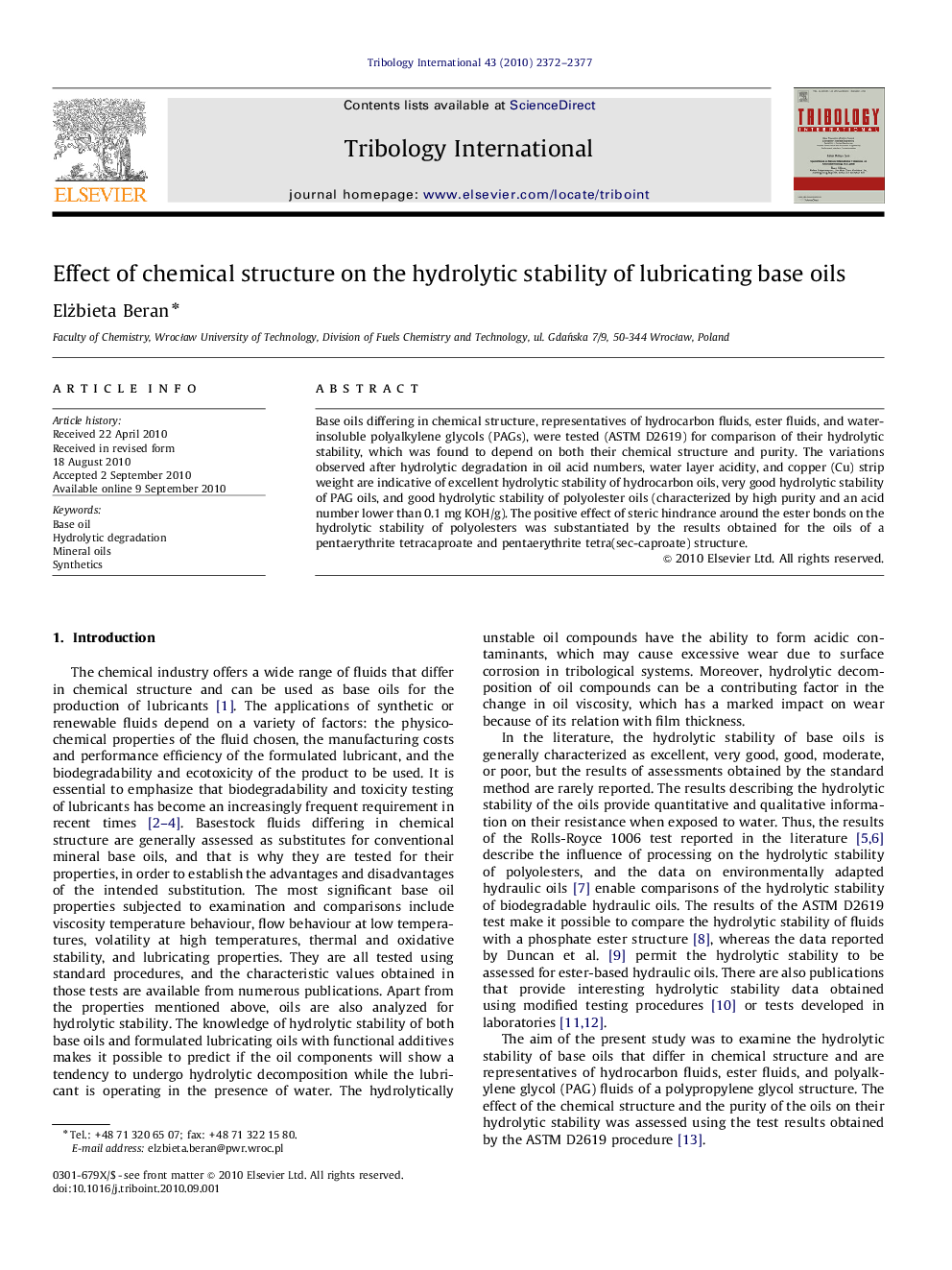| Article ID | Journal | Published Year | Pages | File Type |
|---|---|---|---|---|
| 615807 | Tribology International | 2010 | 6 Pages |
Base oils differing in chemical structure, representatives of hydrocarbon fluids, ester fluids, and water-insoluble polyalkylene glycols (PAGs), were tested (ASTM D2619) for comparison of their hydrolytic stability, which was found to depend on both their chemical structure and purity. The variations observed after hydrolytic degradation in oil acid numbers, water layer acidity, and copper (Cu) strip weight are indicative of excellent hydrolytic stability of hydrocarbon oils, very good hydrolytic stability of PAG oils, and good hydrolytic stability of polyolester oils (characterized by high purity and an acid number lower than 0.1 mg KOH/g). The positive effect of steric hindrance around the ester bonds on the hydrolytic stability of polyolesters was substantiated by the results obtained for the oils of a pentaerythrite tetracaproate and pentaerythrite tetra(sec-caproate) structure.
Research Highlights► In the literature, the hydrolytic stability of base oils is generally characterized as excellent, good, moderate, or poor, but the results of assessments obtained by the standard method are rarely reported. The aim of the present study was to examine the hydrolytic stability of base oils, which differ in chemical structure and are representatives of hydrocarbon fluids, ester fluids, and polyalkylene glycol (PAG) fluids of a polypropylene glycol structure. ► The tests were performed according to ASTM 2619, and hydrolytic stability of the oils was found to depend not only on their chemical structure, but also on their purity. ► The results describing the hydrolytic stability of the oils provide quantitative and qualitative information on their resistance when exposed to water.
